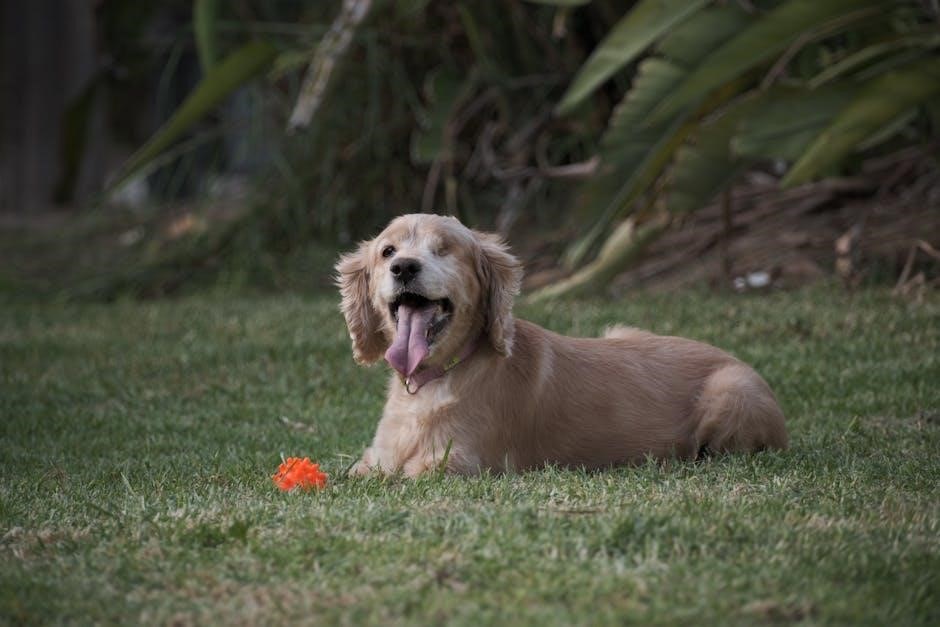Welcome to the comprehensive trophy guide for Avatar: Frontiers of Pandora. This guide will help you navigate the immersive world of Pandora, complete challenges, and unlock all achievements. Discover tips for exploration, combat, and collectibles to maximize your progress and earn the coveted Platinum Trophy.
Overview of the Game and Trophy System
Avatar: Frontiers of Pandora is an action-packed open-world game set on the vibrant planet of Pandora, offering a rich narrative and immersive exploration. The trophy system rewards players for completing main quests, side activities, and achieving specific milestones. Trophies are divided into categories, including story progression, collectible hunting, and combat mastery. To earn the Platinum Trophy, players must achieve 100% completion, which includes scanning wildlife, gathering audio logs, and unlocking all skills in the Navi Skill Tree. The game’s trophy list encourages thorough exploration and mastery of its mechanics, making it a challenging yet rewarding experience for dedicated players.
Importance of Exploration and Completion
Exploration and completion are vital in Avatar: Frontiers of Pandora to fully experience its vast, immersive world. The game rewards players for venturing off the beaten path, discovering hidden locations, and engaging with Pandora’s unique ecosystem. Completion involves not only finishing the main story but also tackling side quests, scanning wildlife, and collecting audio logs. These activities contribute to unlocking trophies and achieving 100% completion. Exploration is key to understanding the game’s lore and mechanics, while completion ensures access to all skills in the Navi Skill Tree. By thoroughly exploring and completing every aspect, players can immerse themselves in Pandora’s beauty and challenges, making the journey both rewarding and unforgettable.

Main Story Trophies
Main story trophies in Avatar: Frontiers of Pandora are earned by completing key quests and progressing through the narrative. These achievements mark significant milestones in the game’s storyline, rewarding players for their advancement. Completing main quests is essential to unlocking story-driven trophies, which are integral to the overall trophy set. These trophies highlight the journey through Pandora’s world and its lore, ensuring a memorable experience for players.
Trophies Related to Completing Main Quests
Trophies tied to completing main quests in Avatar: Frontiers of Pandora are awarded for progressing through the game’s narrative. These achievements are unlocked by finishing specific story missions, such as reaching key locations or defeating pivotal enemies. For example, the “Pathfinder” trophy is earned by completing the early quests that introduce the world of Pandora. Another notable trophy, “Champion of the Na’vi,” is awarded upon completing a series of quests that deepen your connection with the Na’vi people. These trophies are straightforward but require dedication to the story. They serve as milestones, celebrating your progress and immersion in the game’s world. Focus on following the main questline to unlock these achievements seamlessly.
Key Story-Driven Achievements
Key story-driven achievements in Avatar: Frontiers of Pandora are tied to pivotal moments in the narrative. The “Champion of the Na’vi” trophy is unlocked by completing a series of quests that strengthen your bond with the Na’vi people. Another significant achievement, “Pathfinder,” is awarded for reaching key locations that advance the story. These trophies highlight your progress through the game’s main storyline and are often accompanied by cinematic moments. Additionally, some achievements require specific actions, such as riding an Ikran for the first time or solving a critical puzzle. These story-driven trophies are essential for earning the Platinum Trophy and showcase your journey through Pandora’s immersive world. They blend seamlessly with the narrative, making your accomplishments feel meaningful and rewarding.

Side Quests and Additional Activities
Side quests and additional activities in Avatar: Frontiers of Pandora offer diverse challenges, enhancing exploration and trophy collection. Completing these enriches your journey and unlocks unique achievements.
Completion of Side Questlines
Completing side questlines in Avatar: Frontiers of Pandora is essential for earning the Platinum Trophy. Approximately four side questlines are required, all of which remain accessible after the main story. These quests provide valuable rewards, deepen the game’s lore, and offer unique challenges. Players must thoroughly explore Pandora to uncover these quests, as some are hidden in remote areas. Utilizing the Hunter’s Guide can help track progress and locate quest-related objectives. Ensure to complete these quests diligently, as they contribute significantly to overall game completion and trophy unlocks. Proper time management and thorough exploration are key to efficiently finishing these side questlines without missing crucial details.
Exploration Quests and Hidden Locations
Exploration quests in Avatar: Frontiers of Pandora are designed to encourage players to delve into the vast, breathtaking world of Pandora. These quests often involve discovering hidden locations, such as ancient ruins, waterfalls, and bioluminescent forests. Completing these quests not only rewards players with valuable items but also contributes to 100% game completion. Hidden locations are scattered throughout the map, requiring players to venture off the beaten path. Utilizing the Ikran for swift travel and the Hunter’s Guide for tracking objectives can significantly enhance exploration efficiency. Some locations are tied to specific trophies, making thorough exploration crucial for achieving the Platinum Trophy. Dedicate time to explore every nook and cranny, as Pandora’s secrets are as rewarding as they are elusive.

Collectibles and Scanning Requirements
Discover and collect Audio Logs, hidden as blue tablets in RDA and Resistance areas, and scan plants and wildlife to unlock specific trophies and enhance exploration.
Audio Logs and Their Locations
Audio Logs are a key collectible in Avatar: Frontiers of Pandora, with 30 scattered across Pandora. These logs are often found as blue tablets near RDA and Resistance camps, providing insights into the game’s lore. To unlock the related trophy, players must locate and collect all of them. Focus on exploring human settlements, military outposts, and resistance hideouts thoroughly. Use your mount to traverse the map efficiently and keep an eye out for glowing blue markers. Some logs are hidden in hard-to-reach areas, requiring precise navigation. Additionally, scanning these logs contributes to the Hunter’s Guide, offering additional context to Pandora’s world and its conflicts. Prioritize systematic exploration to ensure no logs are missed, as they are essential for 100% completion.
Scanning Plants and Wildlife
Scanning plants and wildlife is a crucial aspect of Avatar: Frontiers of Pandora, contributing to two trophies. Players must scan at least 100 unique plants and 100 unique wildlife specimens. These can be found across Pandora’s diverse biomes, from lush forests to open grasslands. Use the in-game Scanner tool to identify and record these elements. Scanning contributes to the Hunter’s Guide, which tracks your discoveries and provides lore about Pandora’s ecosystem. To unlock the trophies, ensure you scan a wide variety of flora and fauna, avoiding duplicates. Explore thoroughly, as some species are rare or hidden in specific locations. This task encourages immersion and rewards meticulous exploration, making it a cornerstone of the game’s completion challenges.

Combat and Skill Trees
Mastery of combat and skill trees is essential for progression. The game offers a variety of combat styles and abilities to unlock, enhancing your gameplay experience.
Trophies Related to Combat Mastery
Earning trophies related to combat mastery requires skill and strategy. Trophies like Precision Hunter and Rider’s Dominance reward accurate headshots and mounted combat prowess. Others, such as Untamed Fighter, unlock by defeating enemies using Pandora’s wildlife. These achievements highlight your ability to adapt and excel in various combat scenarios. Specific actions, like performing stealth takedowns or using unique Navi abilities, are also recognized. Completing challenging combat sequences without taking damage can grant trophies like Flawless Warrior. Additionally, mastering advanced combat techniques, such as dual-wielding weapons or utilizing the environment, will aid in unlocking these rewards. Focus on upgrading your skills and experimenting with different combat styles to efficiently achieve these trophies and enhance your gameplay experience.
Unlocking Skills in the Navi Skill Tree
Unlocking skills in the Navi Skill Tree is essential for enhancing your abilities in Avatar: Frontiers of Pandora. The skill tree is divided into categories like melee, ranged combat, and survival, each offering unique upgrades. To unlock skills, you’ll need to earn experience points by completing quests, defeating enemies, and exploring Pandora. Trophies like Becoming Navi require unlocking a set number of skills across all trees. Focus on upgrading abilities that complement your playstyle, such as improved weapon handling or enhanced stealth. Additionally, some skills are tied to specific achievements, rewarding mastery of certain combat or traversal techniques. Efficiently managing your skill points and prioritizing key upgrades will streamline your progression and help you achieve the coveted Platinum Trophy.

Exploration and Navigation
Mastering exploration and navigation in Avatar: Frontiers of Pandora is crucial for discovering hidden areas and unlocking trophies. Utilize the Ikran for swift travel across Pandora’s vast landscapes, and explore thoroughly to uncover secrets and complete challenges. Efficient navigation enhances progression and rewards, making it a cornerstone of your trophy journey.
Using the Ikran for Efficient Travel
The Ikran, a majestic flying mount, is essential for efficient travel in Avatar: Frontiers of Pandora. Unlocking the Ikran early in the game, specifically during Main Quest 11, allows you to soar across Pandora’s vast landscapes, saving time and enabling access to remote areas. To fly effectively, practice diving and soaring to maintain altitude and cover long distances. The Ikran’s agility and speed make it ideal for exploring hidden locations, completing exploration quests, and reaching hard-to-find collectibles. Regularly using the Ikran will also help you earn trophies like “Banshee Ride” for taming an Ikran and “Na’vi Aviator” for reaching high altitudes. Mastering the Ikran is a key part of your trophy journey, ensuring seamless navigation and enhancing your overall gameplay experience.
Discovering Hidden Areas
Discovering hidden areas in Avatar: Frontiers of Pandora is crucial for unlocking trophies and experiencing the game’s full potential. Use your Ikran to fly over uncharted territories, scanning for unusual landmarks or glowing plants. Pay attention to subtle environmental clues, such as faint sounds or light emissions, which often indicate secret locations. Exploring caves, waterfalls, and dense forests can reveal hidden caches or exclusive collectibles. Utilize the Hunter’s Guide to track rare wildlife or plants, as these often lead to undiscovered zones. Some areas require precise platforming or puzzle-solving to access. Thorough exploration not only aids in trophy completion but also enriches your understanding of Pandora’s lore. Remember, patience and curiosity are key to uncovering the game’s best-kept secrets;

Tips and Tricks for Trophy Hunters
Focus on completing main story quests first to unlock essential skills and abilities early. Regularly use the Ikran for efficient travel and exploration. Scan plants and wildlife thoroughly for hidden collectibles. Prioritize side quests and exploration to maximize progress. Utilize the Hunter’s Guide to track rare items and locations. Experiment with different combat strategies to master various enemies. Stay patient and persistent, as some trophies require thorough exploration and completion.
Optimizing Progression
To optimize your progression in Avatar: Frontiers of Pandora, focus on completing main story quests first to unlock essential skills and abilities early. Use the Ikran for efficient travel across Pandora, enabling quick access to remote areas. Regularly scan plants and wildlife to contribute to collectible-related trophies and gain insights into the environment. Utilize the Hunter’s Guide to track rare items and locations, ensuring you don’t miss hidden collectibles or side quests. Complete side quests and exploration missions to earn additional XP and unlock new skills in the Navi skill tree. Experiment with combat strategies to master various enemies and weapons. Stay persistent and thorough, as some achievements require extensive exploration and completion of specific tasks.
Using the Hunters Guide Effectively
The Hunter’s Guide is a vital tool for tracking collectibles and hidden items in Avatar: Frontiers of Pandora. Pin up to three items at a time to prioritize your search, ensuring efficient progression. Regularly update the guide as you explore to unlock new entries and locations. Focus on specific regions to avoid missing rare items, and use the guide to identify gaps in your collection. This system is particularly useful for locating Audio Logs and scanning targets for 100% completion. By leveraging the Hunter’s Guide effectively, you can streamline your trophy hunt and minimize post-game cleanup. Make it a habit to consult the guide frequently to stay on track and unlock achievements seamlessly.

Platinum Trophy Roadmap
Earn the Platinum Trophy by completing the story, all side quests, and collectibles. Focus on scanning wildlife, gathering Audio Logs, and mastering combat skills. Estimated completion time: 50-70 hours.
Step-by-Step Guide to Earning the Platinum
To earn the Platinum Trophy in Avatar: Frontiers of Pandora, follow this structured approach. Begin by completing the main story quests while scanning plants and wildlife to unlock early trophies. Next, focus on side quests and exploration missions to uncover hidden locations and collectibles. Use the Ikran for efficient travel and discover all Audio Logs scattered across Pandora. Complete specific activities, such as defeating a set number of enemies or reaching 100% synchronization in certain areas. After the story, dedicate time to cleanup by tracking remaining trophies using the Hunters Guide. Ensure all skill trees are fully unlocked and optimize your progression to avoid missing any achievements. With dedication and thorough exploration, the Platinum Trophy can be achieved in approximately 50-70 hours of gameplay.
Estimated Completion Time
Completing Avatar: Frontiers of Pandora and unlocking all trophies requires approximately 50-85 hours, depending on your skill level and dedication. The main story and essential side quests can be completed in around 30-40 hours, while 100% completion, including collectibles and hidden achievements, will take significantly longer. Players should allocate time for scanning plants and wildlife, completing exploration quests, and mastering combat skills. Cleanup activities, such as finalizing skill trees and gathering remaining collectibles, may add an additional 15-25 hours. Playing on any difficulty won’t affect trophy progress, so choose your preferred challenge level. With a well-planned approach and efficient use of the Hunters Guide, you can streamline your journey to the Platinum Trophy.

Post-Game Activities and Cleanup
Post-game cleanup involves exploring Pandora for any remaining collectibles, completing leftover side quests, and scanning uncollected plants and wildlife. Finalizing skill trees and completing any missed achievements is also essential during this phase. This step ensures all requirements for the Platinum Trophy are met, rounding off your journey in Pandora.
Completing Remaining Collectibles
After completing the main story, focus on tracking down any remaining collectibles, such as audio logs and scanned plants and wildlife. Audio logs, often found in RDA or Resistance camps, provide valuable lore and insights. Scanning plants and wildlife is crucial for unlocking certain trophies, so ensure you’ve documented at least 30 unique species. Use the Hunters Guide to mark and track missing items, pinning up to three at a time for efficient searching. Explore hidden areas and revisit familiar locations with a keen eye for detail. Thoroughly scanning every nook and cranny, especially in densely forested regions, will help uncover elusive collectibles. This step is essential for achieving 100% completion and securing the Platinum Trophy.
Finalizing Skill Trees
Completing the skill trees in Avatar: Frontiers of Pandora is a crucial step toward achieving the Platinum Trophy. Focus on unlocking key abilities that enhance exploration, combat, and stealth. The Navi Skill Tree is divided into five categories, and you’ll need to unlock at least 15 skills total, with at least three in each tree. Some skills, like those in the Rider Skill Tree, become available only after obtaining the Ikran. Use resources wisely, as materials for upgrades can be gathered from the environment or purchased from vendors. Prioritize abilities that complement your playstyle and aid in completing remaining trophies. While you don’t need to max out every tree, ensuring all trophy-related skills are unlocked is essential for 100% completion. This step ensures you’re fully prepared for any challenges during post-game cleanup.

Miscellaneous Trophies
Miscellaneous trophies include unique achievements for specific actions, such as discovering hidden patterns or completing unusual tasks. These add variety to your trophy collection and encourage creative play.
Trophies for Specific Actions
Certain trophies in Avatar: Frontiers of Pandora are awarded for performing specific actions or achieving unique milestones. These include flying a set distance on an Ikran or completing a mission without taking damage. Such trophies add a layer of challenge and encourage players to explore different playstyles.
For example, scanning a certain number of plants or wildlife is required for some achievements. These actions not only unlock trophies but also deepen your understanding of Pandora’s ecosystem. Keep an eye on your progress tracker to ensure you’re on the right path.
Additionally, some trophies are tied to completing specific side quests or interacting with the environment in unique ways. These achievements often require patience and attention to detail, making them rewarding to unlock.
Hidden or Unusual Achievements
Some trophies in Avatar: Frontiers of Pandora are hidden or require unconventional actions to unlock. For example, the “Becoming Navi” trophy involves unlocking 15 skills across the Navi skill tree, while others might involve finding rare locations like the “Weeping Steps.” These achievements often reward creativity and exploration.
Hidden achievements might require specific interactions with Pandora’s environment or completing unique challenges. For instance, certain trophies are tied to scanning rare wildlife or plants, encouraging players to thoroughly explore the world. These unusual milestones add depth to the game and provide a sense of accomplishment for dedicated players.
Keep an eye out for these hidden gems, as they often involve unexpected gameplay moments or discoveries that make the journey through Pandora even more rewarding.
Completing the trophy set for Avatar: Frontiers of Pandora is a rewarding journey that requires exploration, skill mastery, and dedication. Enjoy the adventure and the Platinum Trophy!
Final Thoughts on Completing the Trophy Set
Earning the Platinum Trophy in Avatar: Frontiers of Pandora is a testament to perseverance and dedication. The journey through Pandora’s vast world, filled with breathtaking landscapes and intricate challenges, offers a deeply rewarding experience. By meticulously exploring every corner, mastering combat skills, and uncovering hidden secrets, players can fully immerse themselves in the Na’vi culture and the game’s rich narrative. The trophy set encourages thorough completion, requiring players to engage with all aspects of the game, from main quests to side activities and collectible hunting. While the process can be time-consuming, the sense of accomplishment upon achieving 100% completion is unparalleled, making the effort truly worthwhile for dedicated trophy hunters.






























